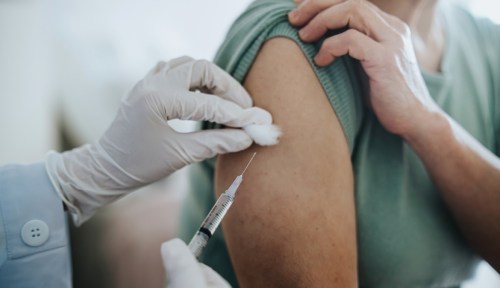More pregnant people are going without prenatal care in the U.S. in recent years. A new report published earlier this week by the Centers for Disease Control and Prevention (CDC)—which analyzed birth and prenatal care rates in 2023 compared to past years—found the percentage of folks who went without prenatal care increased by 5 percent in 2023. Overall, 2.3 percent of pregnant people didn’t get this care last year.
This may not seem like a big number, but when you’re expecting, prenatal care is of the utmost importance. Early and adequate prenatal care is thought to promote healthy pregnancies through screening and management of risk factors and health conditions, and to promote healthy behaviors during pregnancy, according to a June 2019 study in Clinical Obstetrics and Gynecology1.
Adding to the alarm, the number of people waiting until their second or third trimesters to receive care has also increased. According to the report, the percentage of folks who sought care in the first trimester was down from 78.3 percent in 2021 to 76.1 percent in 2023. In fact, late or no-care levels have risen steadily since 2016.
The report didn’t offer an explanation for these numbers. Overall, financial and socioeconomic factors as well as racial disparities can lead to a lack of access to proper care, according to the National Conference of State Legislatures, but that’s always been true. Why the numbers are on the decline right now is still being studied.
Birth and fertility rates declined, too
U.S. birth and fertility rates dropped again last year. Just under 3.6 million babies were born in the U.S. in 2023, down 2 percent from 2022. The fertility rate also dipped by 3 percent, from 56 births per 1,000 females ages 15 to 44 in 2022 to 54.5 births per 1,000 in 2023.
This decline is not necessarily new, though. Since the country’s most recent high in 2007, the number of births has declined 17 percent, and the general fertility rate has declined 21 percent, according to the report. Despite a slight unexpected uptick in births in 2021 (after COVID-19 lockdowns), per a report by Scientific American, numbers have been on a steady decline overall.
The report also highlighted the continued decline in teen birth rates, down 4 percent in teens ages 15 to 19 from 2022 to 2023.
To find free or reduced-cost prenatal care, visit the U.S. Department of Health and Human Services’ website, or call 1-800-311-2229 to connect with a health department in your area. You can also find low-cost or free prenatal care at certain Planned Parenthood clinics.
Howell, Elizabeth A. “Reducing Disparities in Severe Maternal Morbidity and Mortality.” Clinical obstetrics and gynecology vol. 61,2 (2018): 387-399. doi:10.1097/GRF.0000000000000349
↩︎
Sign Up for Our Daily Newsletter
Get all the latest in wellness, trends, food, fitness, beauty, and more delivered right to your inbox.
Got it, you've been added to our email list.











